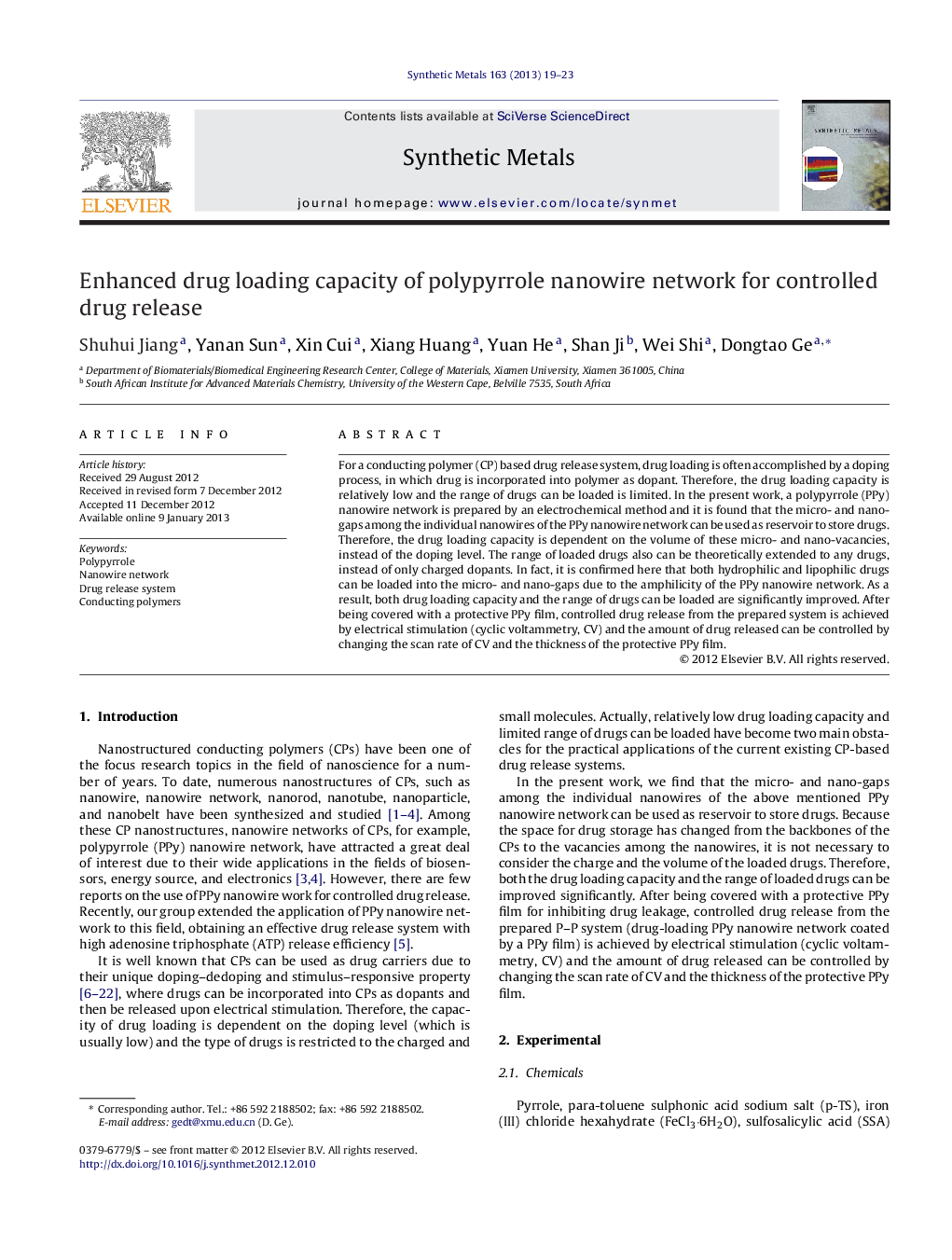| Article ID | Journal | Published Year | Pages | File Type |
|---|---|---|---|---|
| 1441794 | Synthetic Metals | 2013 | 5 Pages |
For a conducting polymer (CP) based drug release system, drug loading is often accomplished by a doping process, in which drug is incorporated into polymer as dopant. Therefore, the drug loading capacity is relatively low and the range of drugs can be loaded is limited. In the present work, a polypyrrole (PPy) nanowire network is prepared by an electrochemical method and it is found that the micro- and nano-gaps among the individual nanowires of the PPy nanowire network can be used as reservoir to store drugs. Therefore, the drug loading capacity is dependent on the volume of these micro- and nano-vacancies, instead of the doping level. The range of loaded drugs also can be theoretically extended to any drugs, instead of only charged dopants. In fact, it is confirmed here that both hydrophilic and lipophilic drugs can be loaded into the micro- and nano-gaps due to the amphilicity of the PPy nanowire network. As a result, both drug loading capacity and the range of drugs can be loaded are significantly improved. After being covered with a protective PPy film, controlled drug release from the prepared system is achieved by electrical stimulation (cyclic voltammetry, CV) and the amount of drug released can be controlled by changing the scan rate of CV and the thickness of the protective PPy film.
► Enhanced drug loading capacity is achieved for CP-based drug release systems. ► The range of loaded drugs is also improved. ► The drug is stored in the micro- and nano-gaps among the individual PPy nanowires. ► The system keeps the advantage of the conventional PPy-based drug release system. ► Controlled drug release from the system is performed by CV electrical stimulation.
